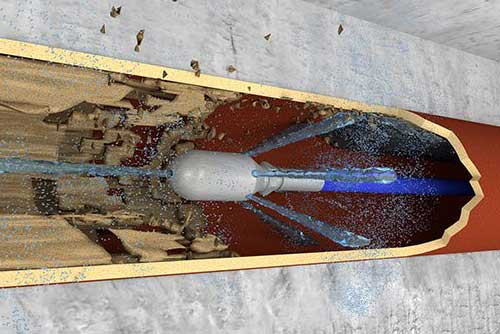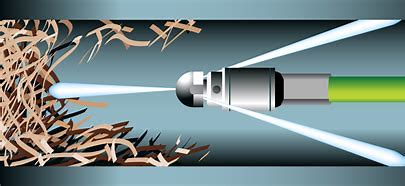“Like a car wash for the inside of your pipes.” Sewer jetting offers a complete cleaning of your drain system, both removing the blockage as well as any residual residue left on the pipe walls.
Regardless of the blockage type whether it be root growth, grease buildup, or a just a paper blockage we will remove the problem and restore your system to its best health.
Sewer jetting is a method of cleaning out sewers and drain lines by using high-pressure water streams through specialized jetting nozzles to dislodge and clear obstructions, as well as perform regular maintenance to prevent sewage backups. Sewer jetting is vital to keeping storm drains and sewer lines in peak condition, helping prevent damage and mitigate further deterioration of the sewers.
There is a multitude of materials that can block and cause damage to sewer lines; fats, oils, grease, minerals, mud, sludge, dirt, and tree roots are all commonly found clogging sewers. There are a variety of machines, nozzles, and other tools that can tackle these jobs, but sewer jetting remains one of the easiest and safest methods of cleaning out sewer and drain lines.
Sewer Jetters can be mounted on a truck, trailer, or skid. Regardless of what it may be called and/or mounted on, it’s purpose is the same; cleaning and maintaining sewer systems using high-pressure water jets to clear debris and unwanted materials.
How Does It Work?
In sewer jetting, an engine (or another power source) powers a high-pressure water pump that builds up within the containment unit, effectively pressurizing the water.
The high-pressure pump delivers water to a hose reel containing high-pressure jetting hose. This hose should be matched for the appropriate pressure and system flow. Once attached to the end of the jetting hose, the nozzle creates pressure within the system. Every nozzle is designed to direct high-pressure water streams back towards the entry point. This is to help propel the nozzle further down the line and pulling the jetting hose through the pipe.
High Pressure Jetting a Clogged Sewer or Drain Line
To penetrate a root mass or blockage allowing the rear to fully remove the blockage, operators should always use a jet nozzle with a forward jet. All of the rear jets can fully clean sewer and pipelines once the flow has been re-established.

The front-facing jet on a sewer nozzle is specifically designed to cut through direct blockages like tree roots, grease buildup, ice, mineral deposits, etc.
High Pressure Jetting a Storm Sewer Line
Storm drains collect and dispose rainwater from roadways, parking lots and rooftops. However, storm drains can collect gravel, dirt, and debris that can restrict flow or cause a complete blockage. High pressure jetting can clean storm drain lines, clearing blockages and removing silt and debris accumulations.

The backward jets help dislodge debris and other sedimentation from pipe walls and pushes the waste back towards the operator for easy removal.
